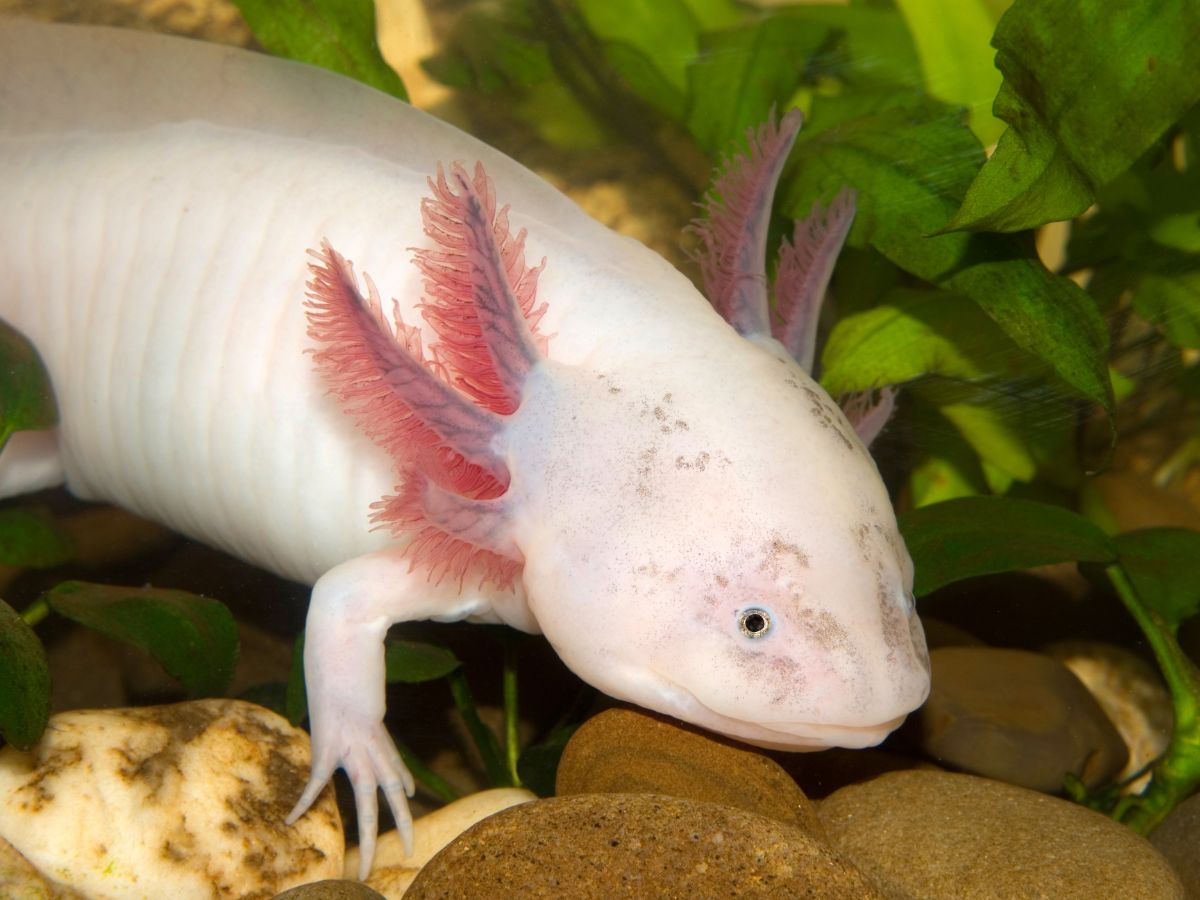Why do axolotls have external gills on the side of their head and how does their breathing work?
The gills of an axolotl are located on both sides of the back of their head. Unlike fish, axolotls have external gills; and are not located inside their body. Axolotls have 3 gill branches on each side of their head.
What kind of gills do axolotls have?
Amphibians in the larval stage in particular, such as the axolotl, often have external gills. If the axolotl were to undergo metamorphosis and become a land-dwelling axolotl, the gills would regress and it would, in contrast, breathe on land with its lungs.
Unlike other amphibians, axolotls don’t undergo metamorphosis and become sexually mature at their larval stage, this is also known as “neoteny”. Naturally occurring metamorphosis is extremely rare in axolotl, so they spend their entire life in the larval stage. Here you can learn more about metamorphosis, how it happens, and why it’s good for axolotls that they normally never go through metamorphosis.
Do axolotls only breathe with their gills?
Axolotls can breathe via 4 different ways, with their gills, skin, lungs, and with what is called “buccal pumping”. Here is an article with more details on the different ways the axolotl can breathe.
Breathing with their gills is the most noticeable because of the external location of their gill branches.
How does gills work?
Due to the fine structure of the gills, they have a large surface area through which the water can flow. The oxygen exchange itself is passive, as oxygen diffuses from the water through the thin membrane of the gills directly into the axolotl’s blood. This occurs because of the low concentration of oxygen in the blood and the high concentration in the surrounding water; to compensate for the difference in concentration, oxygen diffuses into the axolotl’s gills.
Carbon dioxide, on the other hand, is released from the blood in the gills into the surrounding water.
How many gills do axolotls have?
Axolotls have 3 gill branches on each side of their head, which split into finer and finer branches. Due to the strong blood flow, the gills are usually red or pink.
Can axolotls lose their gills?
Yes, some axolotls lose some or all of their gills due to stress, disease, poor water conditions, or because another axolotl bit off parts of them.
Can the gills grow back?
If the axolotl has lost its gills because another axolotl bit them off, they will grow back after some time.
Also, the gills of axolotls that have lost them due to stress, disease, or poor water quality will grow back once the cause of the loss has been corrected and the axolotl is healthy.
If you can’t find a reason for your axolotl’s gill loss and he’s changed his behavior in other ways, it’s a good idea to take him to the vet to find out if he’s sick.
Why do axolotls flap their gills?
Axolotls flap their gills to get fresh water to their gills. This allows oxygen-rich water to reach their gills and flow around the fine membrane, making gas exchange easier.
If your axolotl is flapping its gills significantly more often or particularly frantically, it could be that the water is too deoxygenated.
Why are my axolotl’s gills pale or white?
Normally, the gills of an axolotl are red or pink because of the blood that flows through the gills. However, if your Axolotl’s gills are pale or white, it may be because it hasn’t been active for a while and therefore the gills have less blood flow. This can happen especially quickly if he has been resting or sleeping for a long time.
Here you can learn more about the sleeping behavior of axolotls, how they sleep and when.
As soon as your Axolotl becomes a bit more active again and swims through the tank, its gills should be better supplied with blood and thus more stronger colored.
Can axolotls breathe only in the water?
Axolotls can breathe in water with their gills and outside the water with their lungs. However, they can’t survive long on land despite their lungs, because they would dry out very quickly. That is why they should only be out of the water for as brief a time as possible, even when transferred to a new tank.
Conclusion
Axolotls have external gills and can breathe through their skin and lungs in addition to their gill breathing. If their gills are injured or bitten off, they can regenerate them after some time.

